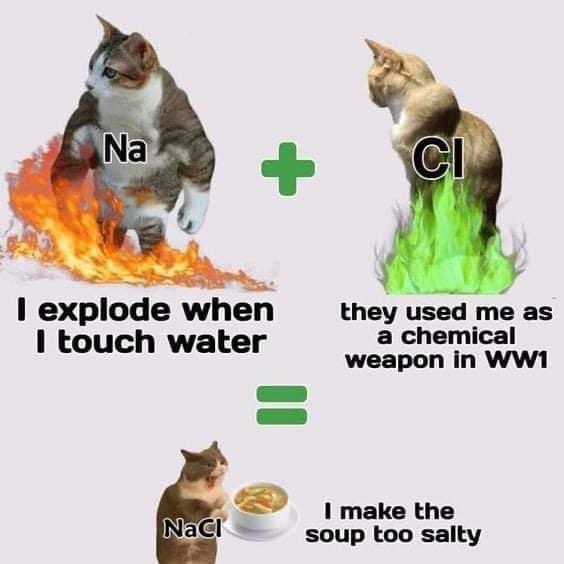this post was submitted on 02 Jun 2025
837 points (98.5% liked)
memes
15487 readers
1 users here now
Community rules
1. Be civil
No trolling, bigotry or other insulting / annoying behaviour
2. No politics
This is non-politics community. For political memes please go to !politicalmemes@lemmy.world
3. No recent reposts
Check for reposts when posting a meme, you can only repost after 1 month
4. No bots
No bots without the express approval of the mods or the admins
5. No Spam/Ads
No advertisements or spam. This is an instance rule and the only way to live.
A collection of some classic Lemmy memes for your enjoyment
Sister communities
- !tenforward@lemmy.world : Star Trek memes, chat and shitposts
- !lemmyshitpost@lemmy.world : Lemmy Shitposts, anything and everything goes.
- !linuxmemes@lemmy.world : Linux themed memes
- !comicstrips@lemmy.world : for those who love comic stories.
founded 2 years ago
MODERATORS
you are viewing a single comment's thread
view the rest of the comments
view the rest of the comments

Yeh, the "strong bonds" actually don't matter, it's the strongly attached electrons
how so?
Atoms are most stable when they have a certain number of electrons around them, described as "having a full shell". A neutral chlorine atom is one electron short of having a full shell, and a neutral sodium atom has one electron more than a full shell. Therefore, neutral chlorine will rip an electron off just about anything, causing damage, while neutral sodium will push its extra electron away, same deal. That is why they are such reactive chemicals. Once they've done that process they are stable.
Then, as the other poster described, they are oppositely charged, so they are attracted to each other with medium strength, but not strongly bonded, which, to simplify it somewhat, is when atoms share electrons which both of them would like to have.
ah right I knew most of that but it didn't click, thx
Ok so my understanding is that NaCl, and other salts, are bound together by ionic bonds.
In these bonds, one element typically gives up an electron completely to the other, as opposed to covalent bonds for example, where the electron (or electrons) are actually "shared" between the atoms.
So here, sodium is happy to give up its electron and live its life as Na+, while chlorine will gladly take it and become Cl-.
Since they now are oppositely charged, they kinda stick to each other because of electrostatic attraction, but not like the atoms in a molecule would.
ah right so in the soup it dissolves into Na+ and Cl- which are nonreactive as opposed to Na and Cl